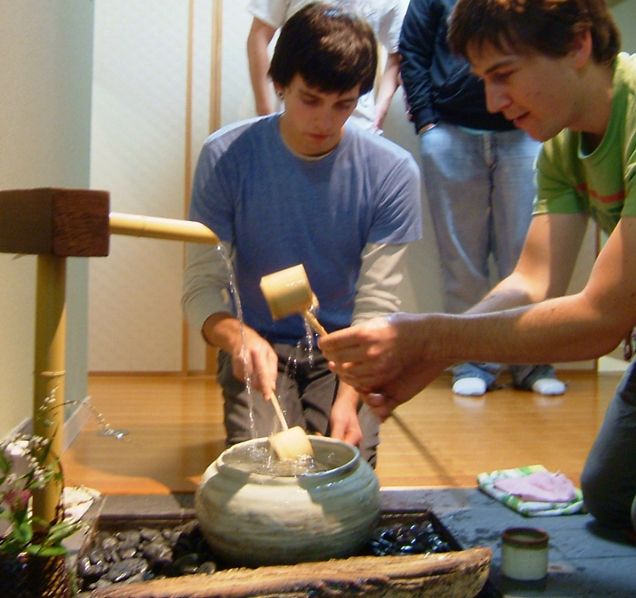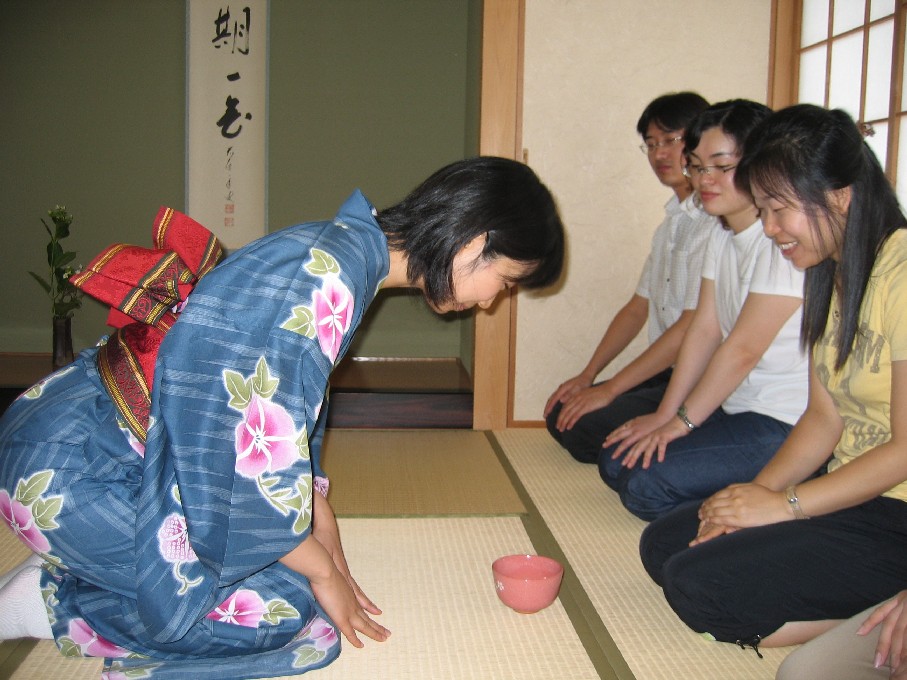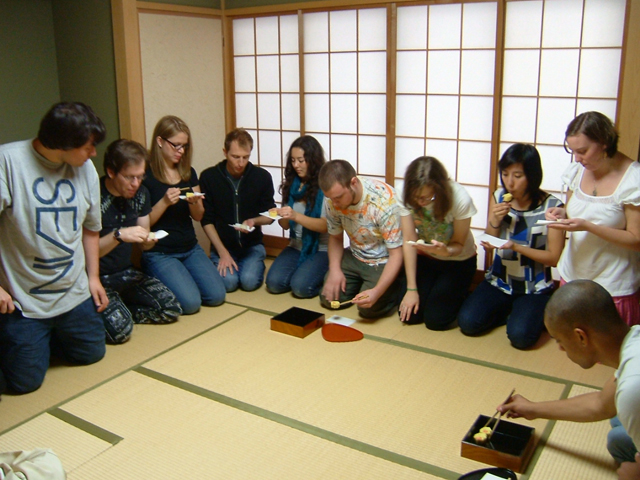
a look into the Japanese tea ceremony
Every KCP International student enjoys the chadou, or traditional tea ceremony. It is also known as “the Way of Tea,” and it is the result of centuries of meditative, ritualized interaction among host and guests. For the Way of Tea, the year is divided into two main seasons: the sunken hearth (ro) season (the colder months, November to April), and the brazier (furo) season (the warmer months, May to October).
Guests remove footwear and wait in the tea room’s entryway until summoned by the host. Guests then ritually purify themselves, one by one, washing hands and rinsing mouths with water from a small stone basin. Guests enter the tea house and are seated on the tatami in order of prestige.
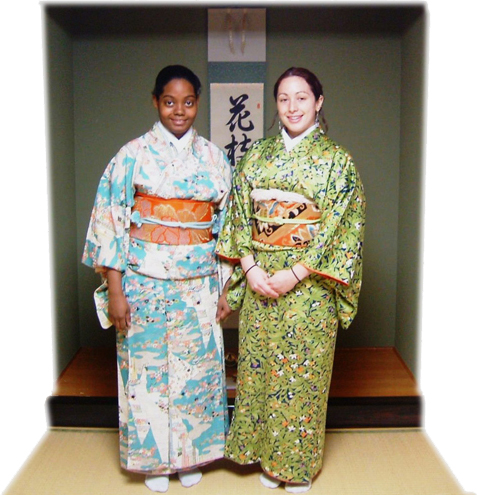
In cold weather, the ro (fireplace) built into the floor of the tea room is opened to heat the tea kettle. The many rituals for purifying oneself, greeting each other, scrupulously washing the tea utensils, and serving the tea with exquisite care are, well, steeped in traditions a thousand years old.
The host and the guest receiving the tea exchange bows. The guest then bows to the next guest and raises the bowl in respect to the host. The guest rotates the bowl to avoid drinking from its front, takes a sip, and compliments the host on the tea. If it is thin tea, the guest drinks all the tea and returns the bowl to the host, who prepares tea for the next guest after washing the bowl. If it is koicha, the guest takes two more sips before wiping the rim, rotating the bowl to its original position, and passing it to the next guest with a bow. This continues until all guests have taken tea from the same bowl, and the bowl is returned to the host.
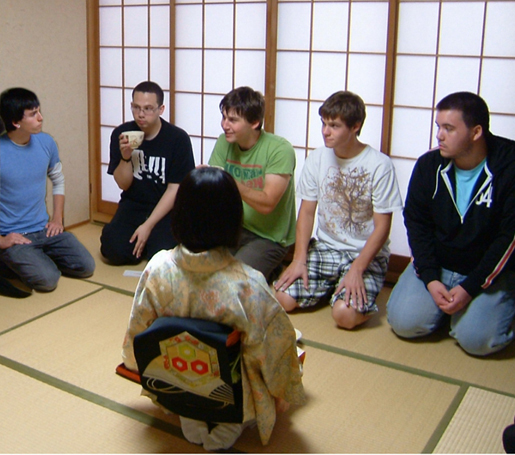
Two kinds of tea may be served. Koicha is a thick blend of powdered tea and hot water, involving a sort of kneading to blend the large amount of powdered tea (matcha) with relatively little water. Usucha is a thin tea. To prepare it, matcha and hot water are whipped using the tea whisk. Along with tea, guests may receive sweets, a light meal, a full meal, or some combination. Here, guests enjoy sweets.
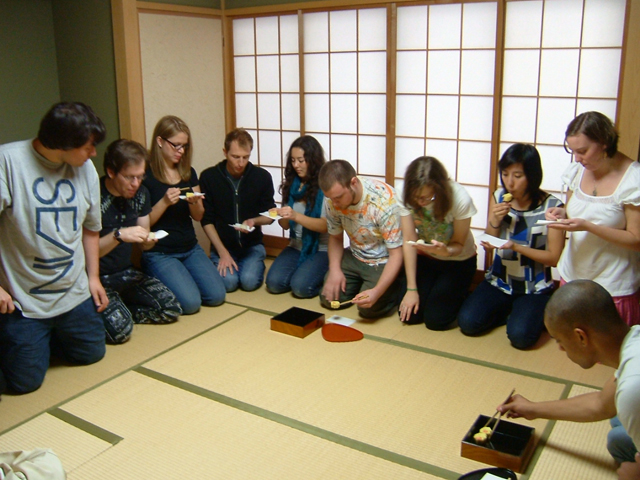
Many of the movements and facets of tea ceremony evolved from the wearing of kimono. For example, certain movements are designed with long kimono sleeves in mind; certain motions are intended to move sleeves out of the way or to prevent them from becoming dirtied in the process of making, serving, or partaking of tea.
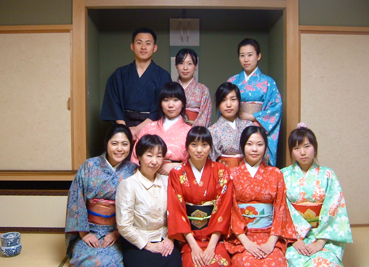
Normally, the host cleans the tea utensils afterwards. These guests were only too happy to take a more active part.
